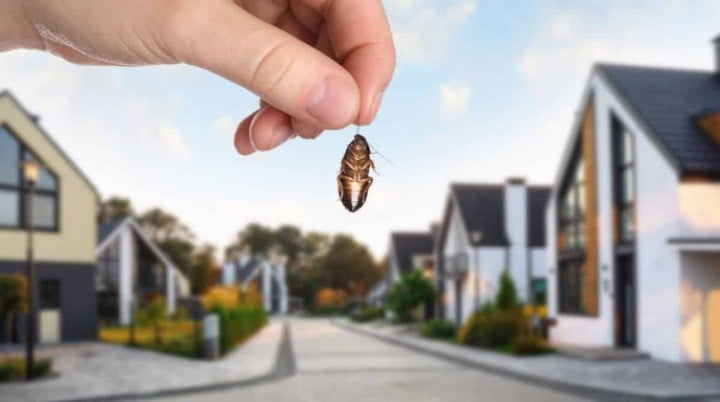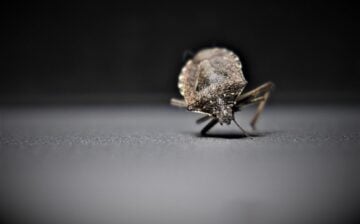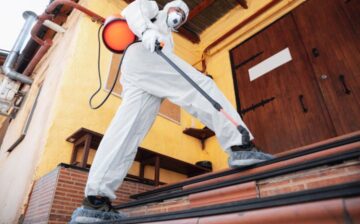
Moving into a new home is an exciting experience, but before settling in, you must take steps to protect it from common household pests. Learn the best tips for pest proofing your home before move-in day, so you can start enjoying your new house straight away. You don’t want uninvited guests in the form of creepy crawlies making their way into your dream home!
Inspect the property before move-in
Before officially moving into a new home, it’s important to conduct a thorough inspection of the property for evidence of pests. This includes carefully examining both indoors and outdoors for signs such as droppings, nests, noticeable damage from gnawing or chewing, and other telltale clues like foul odors.
While you’re inspecting the property, check in dark corners and crevices, entryways and window frames, basements and attics, ventilation systems and woodpiles. If needed make sure to take notes or photographs that may be useful in documenting your findings.
Furthermore review any rental or sale agreement contracts related to pest control to see what the expectations are between you and the owner. Finally if there is any evidence of an infestation contact a professional pest control company right away as they can provide an effective solution that will ensure that your home is pest free before move-in day!
Clean and declutter the house
Before you move into your new home it’s important to do a thorough clean and declutter. This will eliminate places for pests to hide and it will help prevent pests moving in with you. If possible, remove debris like old furniture, bookcases, cardboard boxes, piles of newspapers or magazines, clothing and other clutter from the house before you move in. Clean hard surfaces such as counters and furniture with a strong cleaner to make sure that any egg cases or droppings from previous pest infestations are removed. Vacuum carpets to remove dirt and crumbs which can attract insects like ants.
Once the house is clean and decluttered, start looking for potential entry points for pests around the house. Inspect walls, doors and windows for any holes or cracks that may provide an entry point for rats, mice or other rodents. Make sure door weather-strips are in good condition so that insects cannot get through gaps at the base of outside doors. Check under kitchen sinks for plumbing leaks which may encourage ants or roaches to come into the home looking for a water source.
Take some time to inspect your property line by taking off debris such as leaves accumulated near foundations – this can be attractive shelter site for various types of bugs including ants and roaches. Finally make sure all eaves troughs are cleaned regularly so moisture does not collect around your home – this damp environment can attract several insect pests like mosquitos!
Seal entry points
Sealing your home against pests before move-in is the most cost-effective and efficient way to ensure your space remains pest-free. It’s important to inspect from top to bottom for entry points that small or flying pests could use as an opening. Look for cracks, crevices, and gaps in foundations, walls, doorways, windows, roof lines and eaves, utility lines and pipes, vents, fireplaces chimneys and decks.
In addition to sealing entry points on the exterior of your home with caulk or expanding foam sealant, it’s also important to install door sweeps and weather stripping on all exterior doors that lead inside. This simple step will close any gap around a doorframe allowing no access for insects that fly or crawl into your buildings interior spaces. Be sure to check any existing screens for tears or holes – replacing them with high quality screens which are designed specifically with small aperture sizes that will better protect against invasion from flies, mosquitoes or other flying pests.
Another effective technique is to replace any exterior lights you have with yellow ‘bug’ lights and avoiding activating them for long periods of time at night when insects are more active. While no method guarantees a 100% result if done correctly this will help minimize the chances of pest problems in your new home!
Keep the property clean and well-maintained
In addition to the physical steps you can take before you move into a home to reduce the risk of pests, it’s also important to keep your property clean and well-maintained. This is especially true for areas that may be prone to pest activity.
Make sure all yards, including your lawn and other outdoor spaces, are maintained on a regular basis. Trim any overgrown trees or bushes near your home, as these provide ideal living conditions for pest species. It’s also important to make sure that all windows and doors are sealed properly to prevent easy access for pests.
Pay particular attention to areas where food is stored or prepared on a regular basis. Clean up any messes that occur quickly and thoroughly – damp materials in kitchens can attract ants and other pests, while pet food will attract rodents if not stored securely. Make sure garbage is disposed of regularly and away from the house where possible.
Finally, seal up entryways into your home by checking around utility lines or pipes for small openings where insects may find access. You can plug even minor cracks with caulk or expanding foam insulating material as a further precaution against household pests such as mice or spiders.
Consider using pest control products
Pest control products can be used in a variety of ways to help you pest-proof your new home before you move in. Sprays, baits, traps, and rodent deterrents should all be considered when deciding how to best combat any pests that may already be present or to prevent future pest infestations.
- Sprays: Chemical sprays kill pests on contact and can provide immediate relief from current infestations. These pesticide sprays will only offer a temporary solution and will need to be reapplied regularly for continuous protection.
- Baits: Poisonous baits are an effective way to combat existing pests as well as to discourage future infestation. Baits are designed for both indoor and outdoor use, allow for precise placement of product and can remain active for weeks or months at a time depending on the formulation.
- Traps: Traps use bait and other attractants such as light and warmth, allowing homeowners the option of passive monitoring without leaving poison out in the environment. These traps are less useful against current infestations since they require time to set up and place properly, but they can be very effective at deterring future invasions of some types of pests.
- Rodent Deterrents: Rodent deterrents such as scents, ultrasonic sound emitters, and lights create an environment which makes it difficult for rodents to settle into your home. They work by discouraging rodents from entering your home or making it inconvenient for them to stay once they have been attracted in by other means.
Hire a professional pest control service
Prior to move-in, it is a good idea to have a professional pest control service inspect your new home for potential risks. For example, the technicians from Fantastic Pest Control Kuala Lumpur use advanced technology and techniques in order to identify current activity and recommend products that are effective yet safe for people in the home.
In certain parts of the country and certain times of the year, pests such as rodents, insects, spiders, mites and ants may be more active than usual.
Be sure to hire an experienced pest control professional who can provide an inspection and advice about potential treatments for your new home. These technicians are trained to assess risks, inspect entry points and recommend measures for control based on the specific needs of your home and location. They can also identify current activity and recommend products that are effective yet safe for people in the home.
Taking proactive steps during move-in is essential in order to ensure a safe living environment free of pests.
Conclusion
When it comes to pest-proofing your home before move-in, there is much you can do to make sure your home stays safe and pest-free. By taking a proactive approach and properly inspecting the property, potential nesting or hiding spots, and surrounding land for pests, you can significantly reduce the chances of pests entering your home.
Additionally, sealing off potential entrances into the home, establishing a regular maintenance schedule for routine cleanings, and keeping food in airtight containers will also help keep pests out of your house. If applied correctly, these preventative measures should reduce the risk of an unwanted invasion in your new property.
Frequently Asked Questions
Q1: What are some tips for pest proofing my home before move-in?
A1: There are several tips for pest proofing your home before move-in. First, inspect the home for any signs of pests such as droppings, webs, or nests. Next, seal any potential entry points, such as cracks and crevices, with caulk or steel wool. Lastly, remove clutter, such as piles of leaves or debris, from around the perimeter of the home to reduce pest harborage areas.
Q2: What kind of pests should I be on the lookout for?
A2: Common pest to watch out for include ants, cockroaches, rodents, and spiders. Be sure to inspect the home thoroughly for signs of infestation from any of these pests.
Q3: What can I do to prevent pests from entering my home?
A3: The best way to prevent pests from entering your home is to seal any potential entry points, such as cracks and crevices, with caulk or steel wool. Additionally, keep your home free of clutter and debris, such as piles of leaves or debris, to reduce the likelihood of pest infestation.
We hope you found this blog post on How To Pest Proof Your New House Before Moving In, useful. Be sure to check out our post on Pest Control Tips for Moving Into a New Home for more great tips!
Have Experience in the Moving Industry? Want an Additional Income Stream? Work With All Around Moving!
All Around Moving’s Work With Us program, provides experienced moving relocation consultants with the opportunity to run their own Relocation Consultant business from anywhere in the USA. We are already licensed, and provide you with a dedicated phone line, email address, moving software for leads management, invoicing, and complete set up.
We’ll even provide the carriers, or you can use your own. A nominal one-time start-up fee of $275.00, gives you the “key” to have your business up and running. There is $125.00 monthly recurring expense, and the cost of purchasing your own type of leads you want to work on. We share profits 50-50% with you from all jobs you book with us. Click here to learn more.





